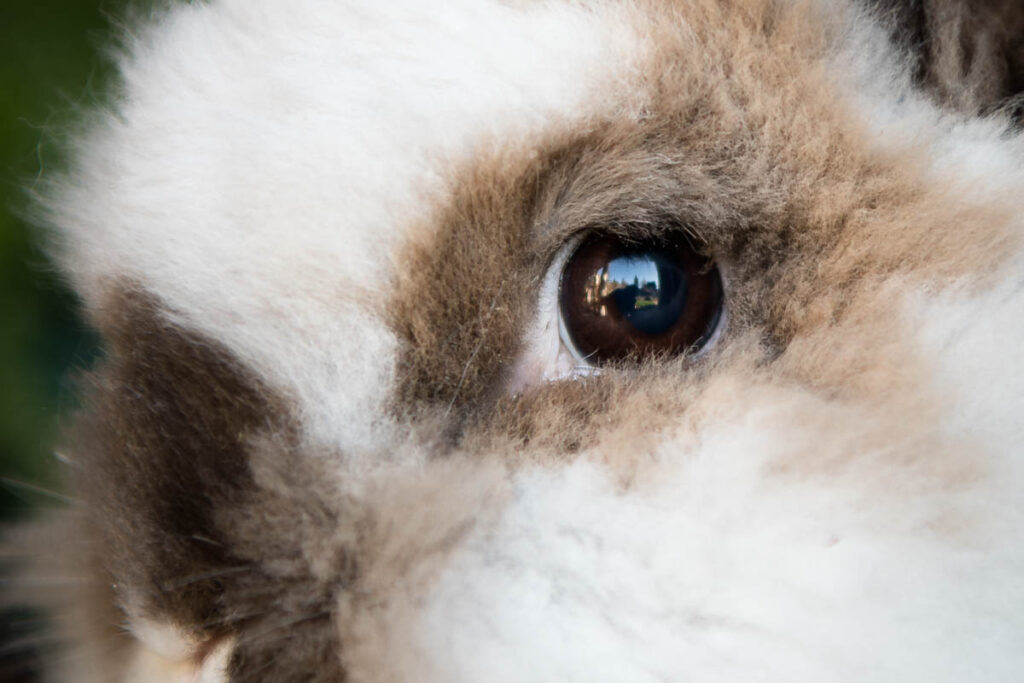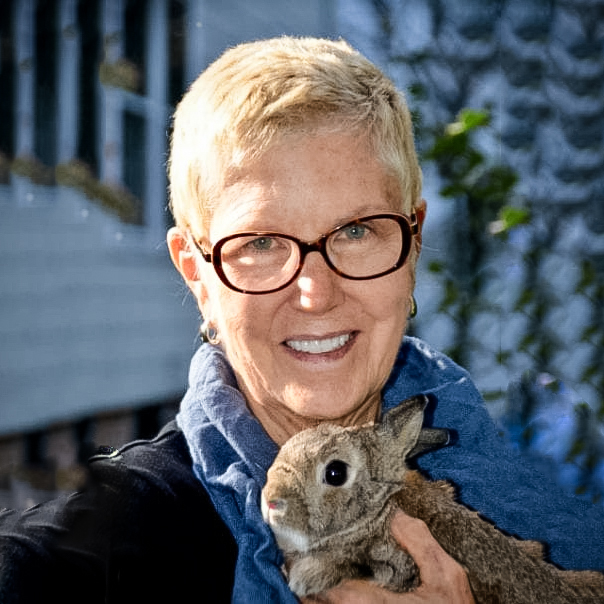There is probably no more difficult a time for a rabbit owner than when a beloved bunny dies – especially if the death is sudden or unexpected. Caretakers are often so grief-stricken that it’s hard for them to function, but this is the very time when an important decision needs to be made: whether or not to have a necropsy performed.
Many rabbit owners, trying to cope with all the emotions evoked by their loss, feel unable even to think about a necropsy, while others, unfamiliar with the procedure, make decisions based on partial (and often erroneous) information.
Through the years, I have had conversations with many rabbit owners who declined to permit a necropsy for a variety of reasons, such as “our rabbit has been through enough,” “we do not want to desecrate his body,” and “we have already spent a fortune, and paying for a necropsy will not bring our rabbit back, so why bother?”
The aim of this article is to shed some light on the topic of necropsy so that owners can be informed at a time when they can absorb and evaluate the information, instead of being faced with having to make critical decisions when they may be incapacitated by grief.
Here are answers to some of the most frequently asked questions about necropsy:
1) “What is a necropsy, anyway?”
A necropsy, in simplest terms, is a kind of surgery performed after death in an effort to determine the cause of death. In humans, this procedure is usually referred to as an “autopsy.” A “naked eye” examination of the body structures and major organ systems is called a “gross necropsy,” while a more comprehensive necropsy involves microscopic examination and sometimes laboratory testing of specimens taken from the body.
2) “When should a necropsy be performed?”
Autolysis (tissue breakdown) begins as soon as death occurs, and this can significantly impact the results of a necropsy. Therefore, the sooner a necropsy can be performed, the better. “Rabbit necropsies should be done, if at all possible, no later than six hours after death,” says Dr. Jennifer Saver of Catnip & Carrots Veterinary Hospital, “as rabbit tissues deteriorate very rapidly. The body should be refrigerated until then, but not frozen, as the freezing and thawing process destroys the integrity of cells.”
3) “How is a necropsy performed and how long does it take?”
In a gross necropsy, an incision is made, and organs and structures are visually inspected for abnormalities. In a more comprehensive necropsy, tissue, and sometimes fluid, samples are taken (and photographs may be taken as well). Depending on what is done, the procedure can take anywhere from 30 to 60 minutes, and sometimes much longer. When the necropsy is completed, the rabbit’s body is sutured up, just as it is after surgery on a live animal. Then, depending on the owner’s wishes, the body is either returned to the owner for burial or cremation, or sent out directly for disposal.
4) “How much does a necropsy cost?”
Necropsy costs, as with other costs, vary somewhat from vet to vet. But typically, and depending on exactly what is done, the cost for the procedure itself, performed by your own veterinarian, will not be less than around $100, and not more than around $200. Many vets will perform a gross necropsy of animals who were their patients at a reduced (or even no) cost, as a courtesy to their clients. However, the cost of the procedure that your vet performs does not include tests on all the tissues or body fluids that may be submitted to a pathology laboratory for examination, and these lab costs can add significantly to the overall cost.
“Tissue sampling,” says Dr. Anthony Pilny of the Center for Avian & Exotic Medicine, “is what becomes expensive, and obtaining biopsy reports can run from $130 to $450 or more, depending on lesions seen.” Necropsies involving neurologic evaluations of the rabbit’s brain or spinal cord (e.g., inspection for signs of E. cuniculi) are much more difficult, take considerably longer, are significantly more expensive, and therefore are rarely done.
5) “Do I really need all those lab tests?”
The answer to this question is “it depends.” Although nothing can replace comprehensive lab work for those owners who want the most definitive answers possible, costs for many owners can be prohibitive. Says Dr. Rebecca Campbell of Symphony Veterinary Center, “It’s hard enough to convince a grieving owner to allow an educational, low- or no-cost necropsy, much less to agree to fund the microscopic pathology tests that are so important.” That said, a gross necropsy is often enough to provide at least some answers. Tumors, for example, can often be seen on necropsy without microscopic examination, and this is useful information, even though owners may not be able to spend the additional money to identify the tumor type. Pyloric blockages (often involved in bloat cases) can also be found on gross necropsy. Organ abnormalities (in color, size, shape, structure) can be noted as well, although additional lab tests may be required to determine the reason for the abnormality.
6) “Why should I consider a necropsy when it is not going to bring back my rabbit?”
A necropsy is valuable on several fronts, and determining the cause of death is only the most obvious. If the death is found to be from an infectious agent, the necropsy can make it possible to protect other rabbits in the same household. If the death was caused by an unrecognized toxin, this is useful information for preventing other deaths. Necropsies also provide a phenomenal learning opportunity for your veterinarian. “I was taught in veterinary school that the necropsy is the clinician’s ‘trial by jury,’ ” says Dr. Pilny. “It’s more than just an opportunity to learn; it allows for definitive diagnoses, support of pre-death test results, recognition of unusual medical cases, and confirmation of the usefulness of treatment protocols.”
Says Dr. Campbell, “necropsies of any rabbit, healthy or unhealthy, are incredibly helpful tools. Very few books or videos can truly replace what you learn by seeing the structures yourself.” Dr. Gil Stanzione of Dakota Veterinary Center adds, “necropsies allow us to gather information that can help other bunnies in the same home, as well as bunnies elsewhere.” Necropsies offer a way for a vet to confirm (or not) his/her diagnosis, in those cases where owners have refused (often for financial reasons) diagnostic tests while the rabbit was alive.
A final reason for considering necropsies is that, more often than not, they bring a deep, and unexpected, peace of mind. Without knowing the cause of a rabbit’s death, many owners torment themselves worrying that they (or their vets) have done something wrong in caring for or treating the rabbit.
Donna Sheridan, a longtime volunteer for Rabbit Rescue & Rehab and a licensed educator for House Rabbit Society, was bereft over the death of her bunny, Fred: “After a lifetime free of illness, Fred was gone in a flash, following a brief episode of stasis. Did I miss some symptom or sign? Why is Fred gone? I needed answers to these questions.” A necropsy can provide such answers, and Fred’s necropsy brought Donna enormous relief from her feeling that she was somehow responsible. “I will never forget Dr. Saver’s words, when she called me with the results: ‘Fred was riddled with cancer; he could not have been saved.’ Fred’s necropsy results were a gift to me.”
Some years ago, two of our former foster rabbits, littermates who were around 2 1/2 years old and who had been adopted into separate homes, died suddenly within 30 days of each other, without any clinical signs whatsoever. Necropsies authorized by the respective owners revealed that both rabbits had died of the same thing: a congenital heart defect. Without these necropsies, the owners might have felt in some way responsible for the mysterious deaths of these very young animals.
Dr. Saver recently spayed a newly rescued female rabbit who had been found outdoors with a male rabbit. The female was slightly underweight, but the decision was made to proceed with the spay, since the possibility of pregnancy was so high. The surgery was routine and uneventful and the rabbit (who turned out not be pregnant) was discharged the next day. Three days later, the rabbit became anorexic and was hospitalized for treatment, but died the following day. Necropsy revealed several tapeworm segments, each around 1.5 feet in length, blocking a portion of her jejunum (a part of the intestine), which was swollen and discolored, and showed evidence of tissue necrosis. “Imagine how new owners would have felt if this rabbit had just been adopted,” says Dr. Saver. “Without a necropsy, they might have thought that there had been some problem with the spay surgery, or that they had failed to care for the rabbit properly during her recovery.”
Marinell Harriman, author of The House Rabbit Handbook, reports that her daughter Tania was once house-sitting, caring for Rudy, a rabbit who was on long-term antibiotics and had difficulty moving. She placed him next to his water bottle, as usual, and when he didn’t drink, she figured he simply wasn’t thirsty. He died a couple of hours later. Tania felt terribly guilty, thinking she had missed something that could have saved him – until the necropsy. The gross necropsy showed that, although the external ear canals were clean, both tympanic bullae (inner ears) were filled with pus. The rabbit’s brain was submitted for biopsy, and the findings were significant meningoencephalitis. Nothing Tania could have done would have helped Rudy.
For most rabbit caretakers, necropsy is a difficult subject, which typically needs to be considered at a very difficult time. Thinking in advance about the issues involved can make it easier to arrive at an informed decision when the time comes. If the costs of a comprehensive necropsy are simply too high, then consider asking your veterinarian to perform at least a gross necropsy, which can yield worthwhile information not only for you, but also for your veterinarian. “Personally, I always want to know if we were right, and doing the right thing for the patient,” says Dr. Pilny. “There is nothing to lose at that point, and potential to gain.”
©Copyright Mary Cotter. All Rights Reserved. Republished with the permission of the author.
Rabbit Necropsy: Knowledge After Death was originally published in NYC METRO RABBIT NEWS.

